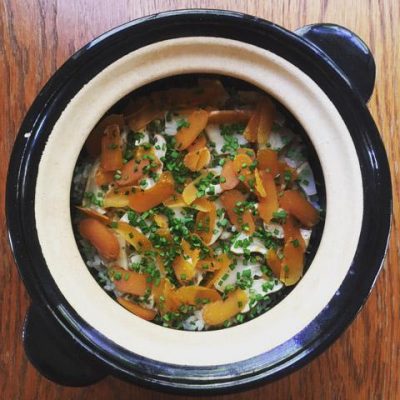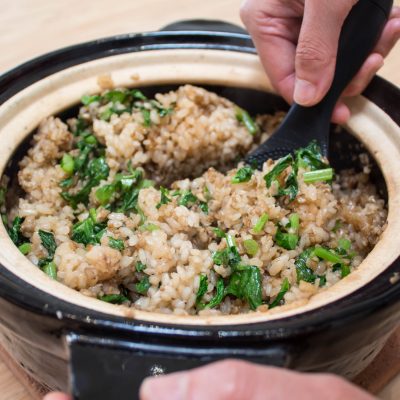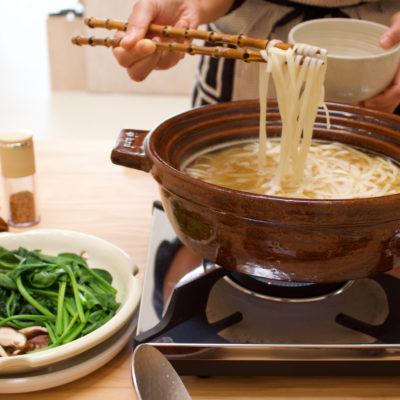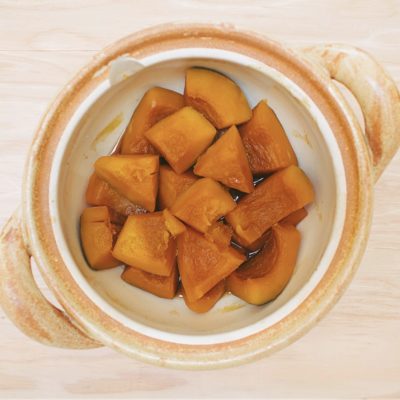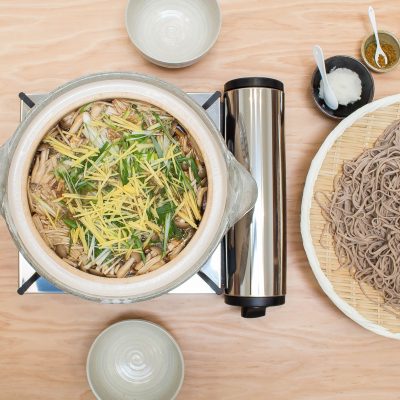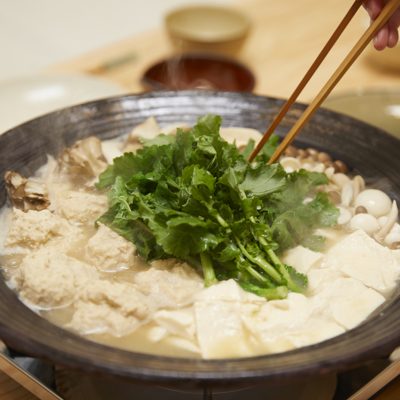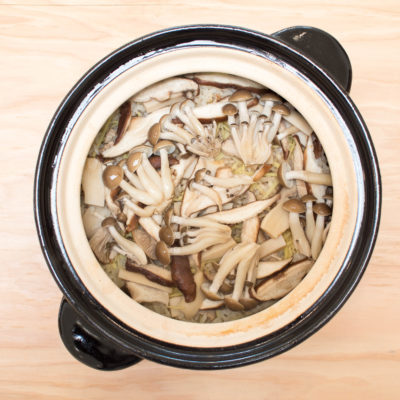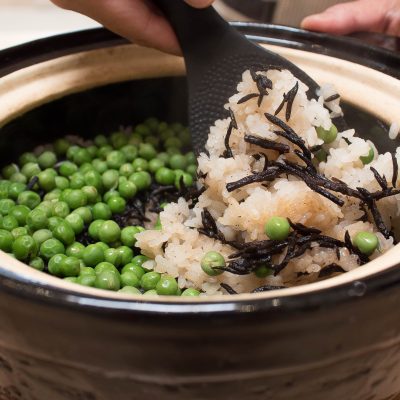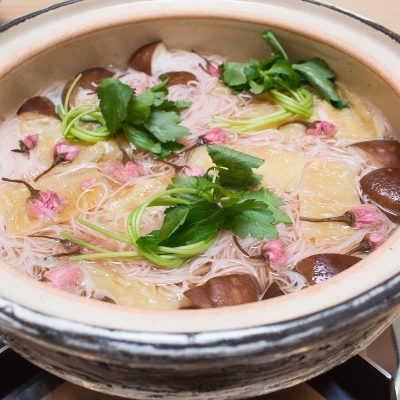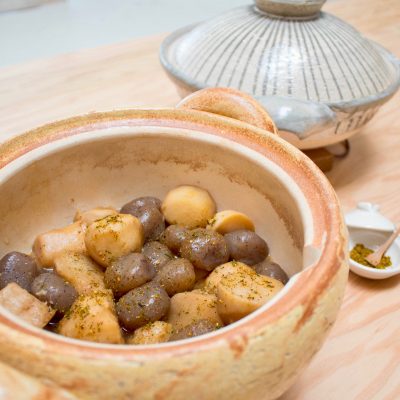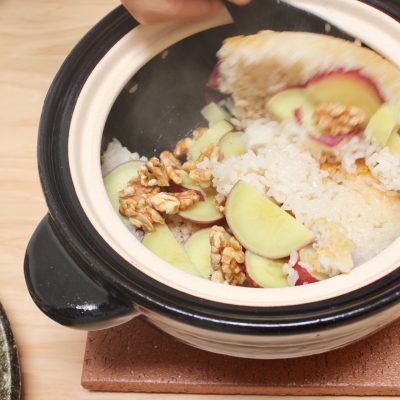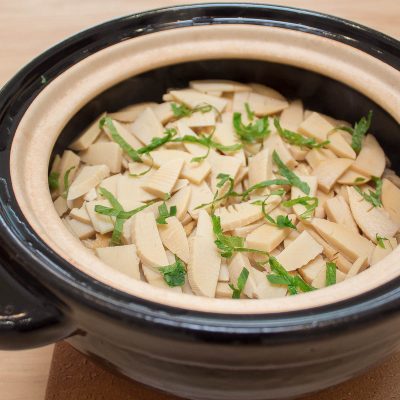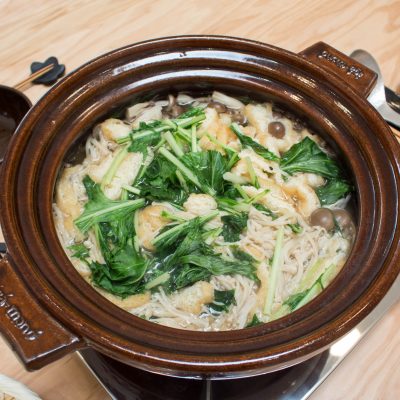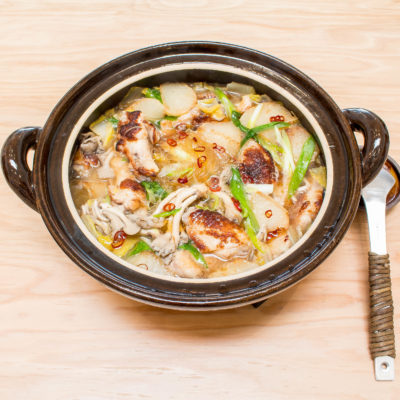When I’m lucky enough to have these special ingredients at the same time, I love making this dish. The earthy perfumy aroma of matsutake mushroom is so elegant and there is nothing equivalent to it. The umami-packed and slightly chewy character of karasumi (cured mullet roe, a Japanese delicacy, and it’s also a famous Italian ingredient, called bottarga in Italian.) You can substitute matsutake mushroom with a different kind of mushroom such as shimeji (although the aroma is very different, it’s still tasty) when matsutake is out of season. For karasumi, instead of slicing it, you can grate it to mix in the rice, too.
The dish shown in this photo is made in 1 rice-cup size Kamado-san.

